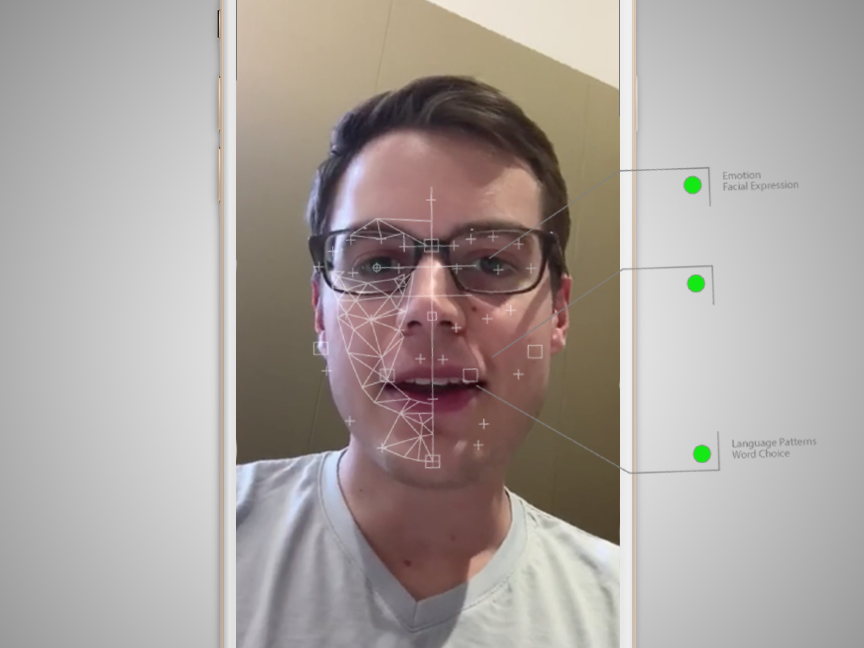• HireVue uses AI to analyze word choice, tone, and facial movement of job applicants who do video interviews.
• The company has raised $95 million and works with companies like Unilever and Goldman Sachs.
• I tried the software by applying to a HireVue job and discussed the results with HireVue’s CTO.
If HireVue is correct, using artificial intelligence to screen job applicants is a glimpse at the future of recruiting.
Mark Newman founded HireVue in 2004 as a video interview platform. It saved recruiters time by allowing candidates to record answers to interview questions and upload them to a database where recruiters could easily compare how applicants presented themselves.
Four years ago, HireVue began the next phase of its life with the integration of AI.
HireVue uses a combination of proprietary voice recognition software and licensed facial recognition software in tandem with a ranking algorithm to determine which candidates most resemble the ideal candidate. The ideal candidate is a composite of traits triggered by body language, tone, and key words gathered from analyses of the existing best members of a particular role.
After the algorithm lets the recruiter know which candidates are at the top of the heap, the recruiter can then choose to spend more time going through the answers of these particular applicants and determine who should move onto the next round, usually for an in-person interview.
HireVue has raised $93 million since its Series A round in 2008, and CEO Kevin Parker told me it has had more than 600 clients. These clients include companies like Goldman Sachs, Unilever, Under Armour, and Vodafone. Most companies primarily use it as a first-round screener for entry-level positions. A major draw for companies, Parker said, is time reduction, as well as the potential for removing biases like overvaluing applicants that remind recruiters of themselves, or remembering candidates more or less positively depending on time of day and energy level.
HireVue would not disclose its revenues, but said that it uses an annual subscription format with clients.
I first learned about HireVue when I wrote about the way Unilever has been using it with entry-level applicants for the past year, and wanted to try it for myself. HireVue set up an application for an internal customer support representative, using the company's real data for the ideal employee.
It had eight of its employees take the same application I did to test my responses against theirs. We were measured against the average of the responses of the best customer support reps at HireVue, which was previously collected data.
Applicants can choose to take the application on their desktop or laptop and use a webcam, or use their smartphone or tablet. I downloaded the HireVue app to my iPhone 7 Plus, which has a large, sharp screen.
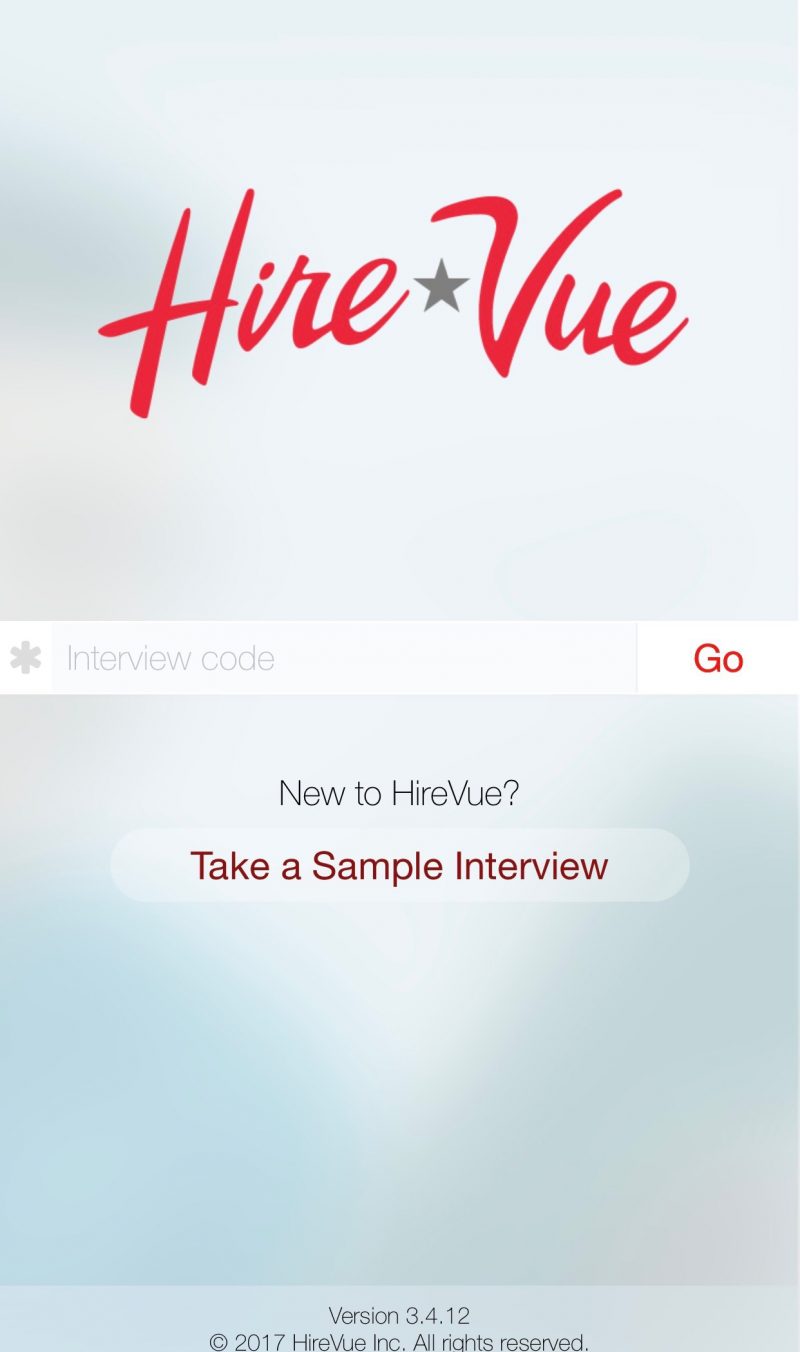
I found an empty conference room and propped up my phone with my water bottle.

The interface was intuitive. I was told I'd be given 11 questions, and that the application would last 25 minutes.
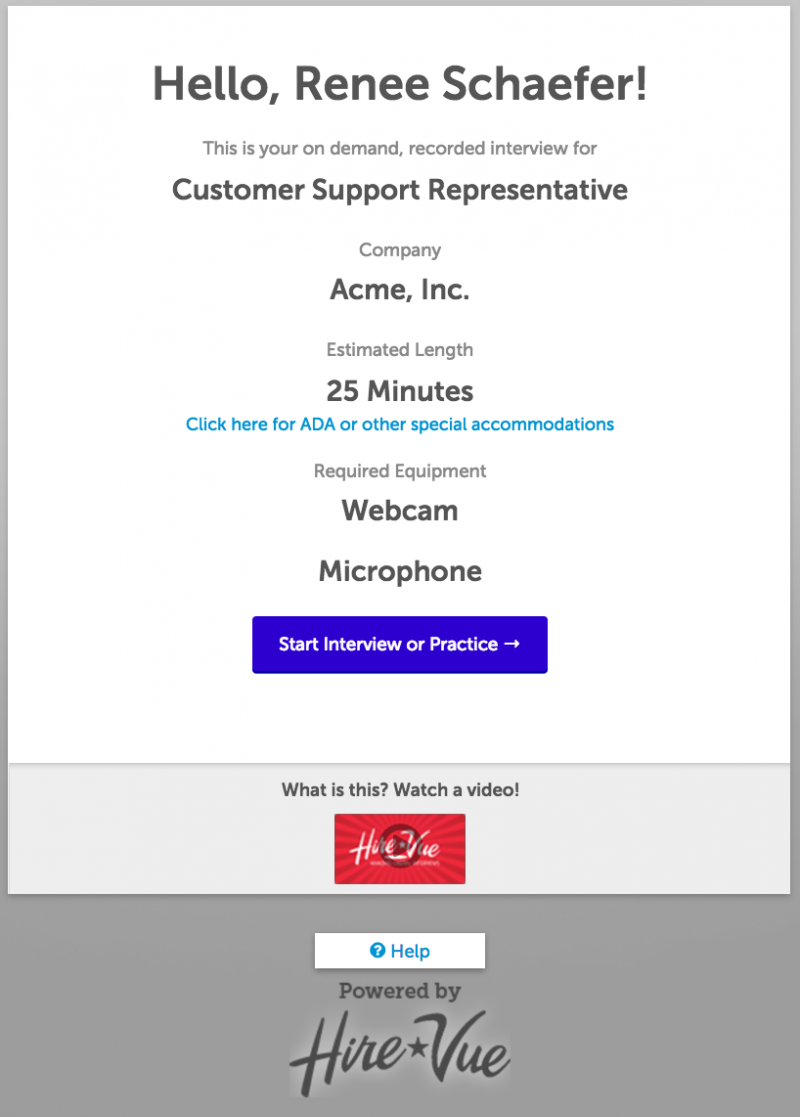
The screenshot above is, obviously, not from my interview (I did not take screenshots of images as I went through the experience), but it's similar to what I saw.
In recorded videos, HireVue employees asked questions like, ‘How would you describe your role in the last team you worked in?’
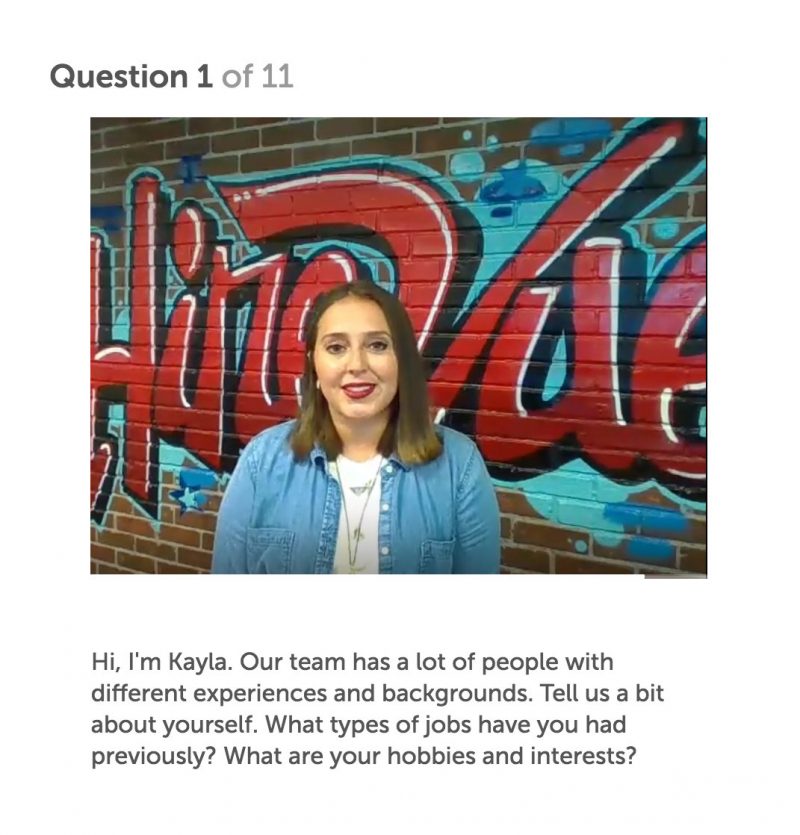
These particular videos were low resolution, and HireVue CTO Loren Larson told me this was intentional, so that applicants could focus on the question itself. Other companies choose to have their recorded material be sleek and high resolution, he told me. It's all a matter of customizing the experience to suit your branding and needs, he said.
As soon as I saw my face reflected back at me on the screen, I felt uncomfortable.
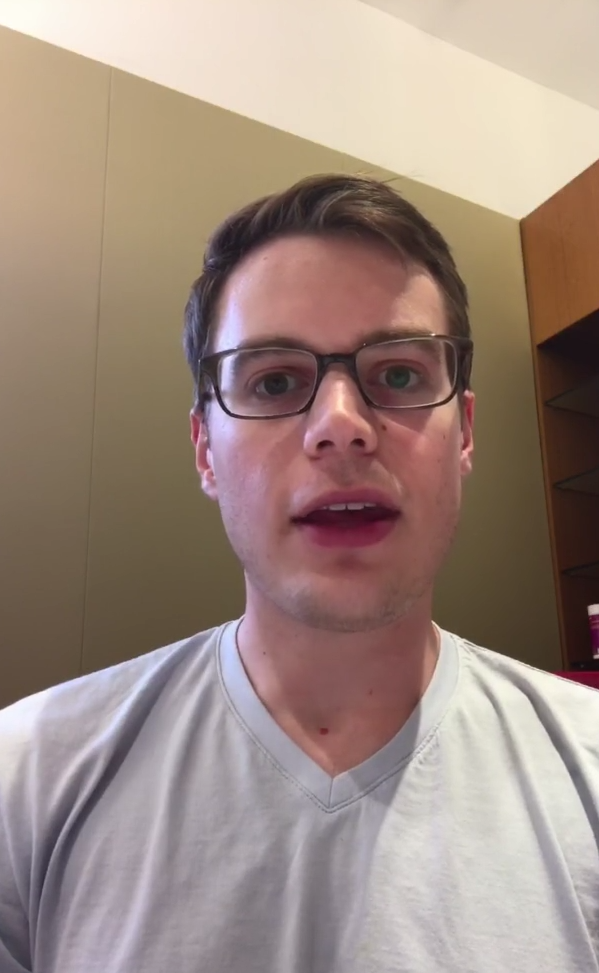
I had 30 seconds to prep my answer, and then a couple minutes to give my response. Most importantly, I was given unlimited tries, as all HireVue users are.
With the unlimited answer feature, you can review your recorded response before moving onto the next question, giving you the chance to decide if you'd like to give it another shot.
I made liberal use of this feature, and the estimated 25-minute application soon stretched into 45 minutes. Larson told me they experimented with unlimited and limited tries for questions, and said they found that the majority of users preferred unlimited.
Recruiters don’t have to restrain their applications to pure video. I was given a text question, where I was asked to send an email to an anxious customer with a product question.

I was provided the answer and tasked with presenting it in the clearest and most assuring way.
I met with Larson the next day to go over my results.
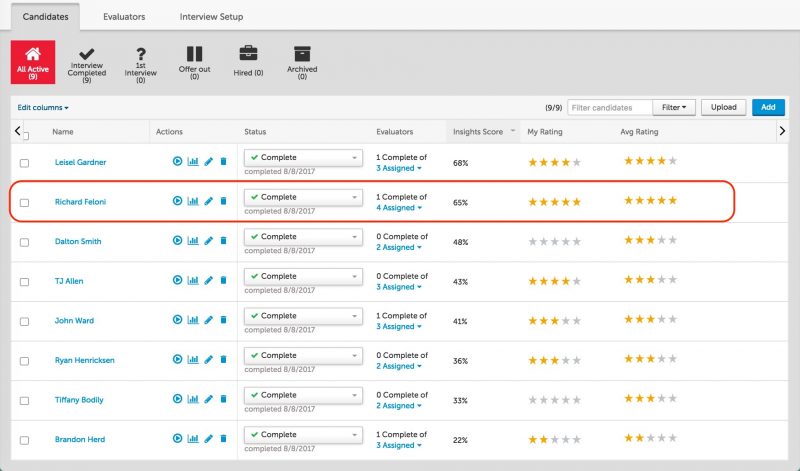
I came in second place, according to my "Insights Score," which was 65%. This meant that according to the software, I had 65% of the qualities of the perfect customer service rep.
Larson showed me what a recruiter would see when analyzing my answers.

The idea is that the AI helps highlight the top performers so that recruiters can dive in and spend time with the most promising candidates.
Larson said that he understands that people first hearing about HireVue may find it to be scary or invasive, like something out of "Minority Report," but he said that it's a tool to make jobs - for humans - more efficient. "The idea is not to replace recruiters," he said.
This made the technology seem much more practical to me, especially when recruiters have to go through hundreds of applications.
The strength of HireVue, however, is also its potential weakness - the AI learns from the employee pool hiring managers choose to feed it. It can then be customized to remove certain biases, such as vocal tics, but that is also dependent on human judgment. Ultimately, the AI is automating how hiring managers already recruit, and if they want to correct for past mistakes, they need to be cognizant of them in the first place.
Larson said that he and his team will be working on lessening the need for human intervention, refining their AI assessment toward an ideal that may or may not ever exist. In that case, after a candidate submits his or her application, "the algorithm is always right. It would be a 'Yes' or a 'No.'"

